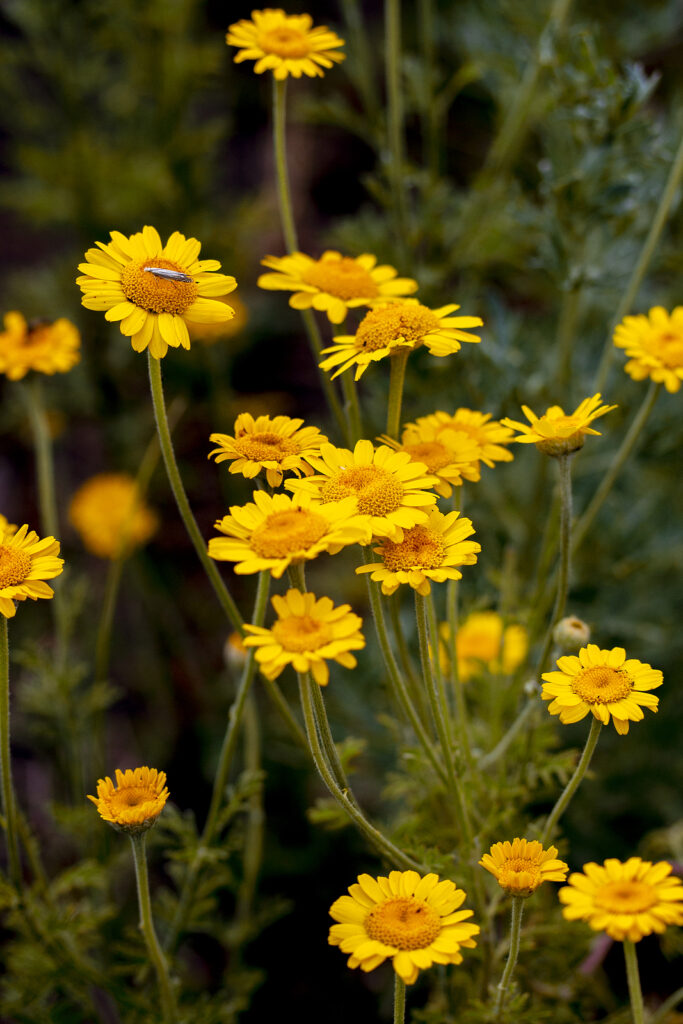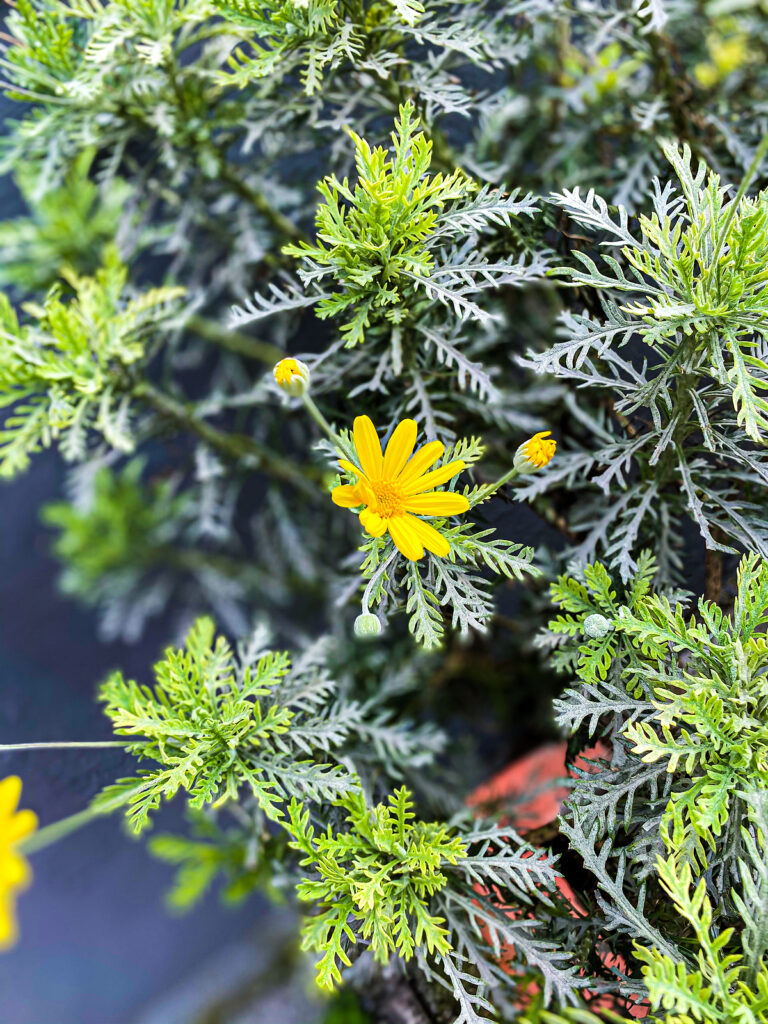Anthemis bears cheerful daisy-like flowers commonly called golden marguerites. Flowers appear above feathery foliage on mat or mounding plants. Flowers appear over an extended time from spring into summer.
Anthemis grows 2 to 3 feet high and wide. The foliage is finely cut light green on the surface and felted gray underneath. The foliage is pleasantly aromatic. Anthemis is virtually trouble-free; all it needs is a sunny location, well-drained soil, and moderate water.
Anthemis is a genus of about 100 species; most are perennials or subshrubs well-suited for hot climates. Established plants can survive drought and can grow in average sandy or gravelly soil.

Get to know Anthemis
- Plant type: Perennials are sometimes grown as annuals
- Growing zones and range: Zones 3 to 9 depending on the variety.
- Hardiness: Perennials will die back after frost
- Height and width: 12 to 36 inches (30-91cm) tall and wide depending on the variety.
- Foliage: Aromatic foliage and stems; finely divided, fernlike foliage; leaves are felted gray on the underside.
- Flowers: Daisy-like disk florets; some flowers are buttonlike
- Flower colors: Yellow or white flowers
- Bloom time: Spring and summer
- Uses: Beds and borders, rock gardens
- Common name: Golden marguerite, dog fennel
- Botanical name: Anthemis
- Family name: Asteraceae
- Origin: Mediterranean region
Where to plant Anthemis
- Plant Anthemis in full sun.
- Grow Anthemis in average, well-drained soil. Plants tolerate dry soil.
- Grow Anthemis in neutral to slightly alkaline soil.
Anthemis uses and companions
- Plant Anthemis in a border or rock garden.
- Good companions include Catananche caerulea, Heliopsis helianthoides, and Sedum ‘Autumn Joy’.

When to plant Anthemis
- Start seed indoors 2 to 4 weeks before the last frost in spring.
- Set plants in the garden after the last frost in spring.
Planting and spacing Anthemis
- Sow seed 1/8 inch deep in seed starting mix or light potting soil indoors; sow seed outdoors in evenly prepared soil.
- Space Anthemis 24 inches (60cm) apart.
How to water and feed Anthemis
- Keep the soil evenly moist for best growth; do not overwater.
- Fertilize Anthemis in spring with an all-purpose organic fertilizer.
Anthemis care
- Cut plants back after first blooms to encourage additional blooms.
- Tall plants may need staking.
Anthemis pests and diseases
- Anthemis is usually trouble free.
- Slugs and snails may attack where the soil stays moist.

Anthemis propagation
- Propagate Anthemis by dividing clumps in spring.
- Take cuttings from the shoots at the base of plants in spring or late summer.
- Start seed in spring. Named cultivars do not grow true.
- Divide plants in autumn or spring every two or three years.
Anthemis varieties to grow
- Anthemis carpatica: green to gray-green mounds; 1.5 inches white, yellow-centered daisies on 6-inch (15cm) stems in spring and summer.
- A. marschalliana: Grows to 12 inches (30cm) tall and wide; finely cut fernlike, silvery leaves; 1-inch-wide brilliant yellow daisy-like flower in summer.
- A. nobilis, chamomile: Spreading 3- to 12-inch (30cm) bright green aromatic leaves; small yellow flower buttons.
- A. punctata cupaniana: Mounded plant to 12 inches tall; silvery foliage topped by white daisiea.
- A. sancti-johnnia, golden marguerite: Grows to 36 inches tall; bears finely cut fernlike leaves; 2-inch-wide orange daisies with rounded centers.
- A. tinctoria, golden marguerite: Shrubby growth to 36 inches (91cm) tall; light green divided leaves; golden yellow daisy-like flowers to 2 inches across; blooms in summer; several named cultivars.















